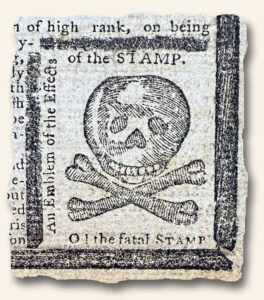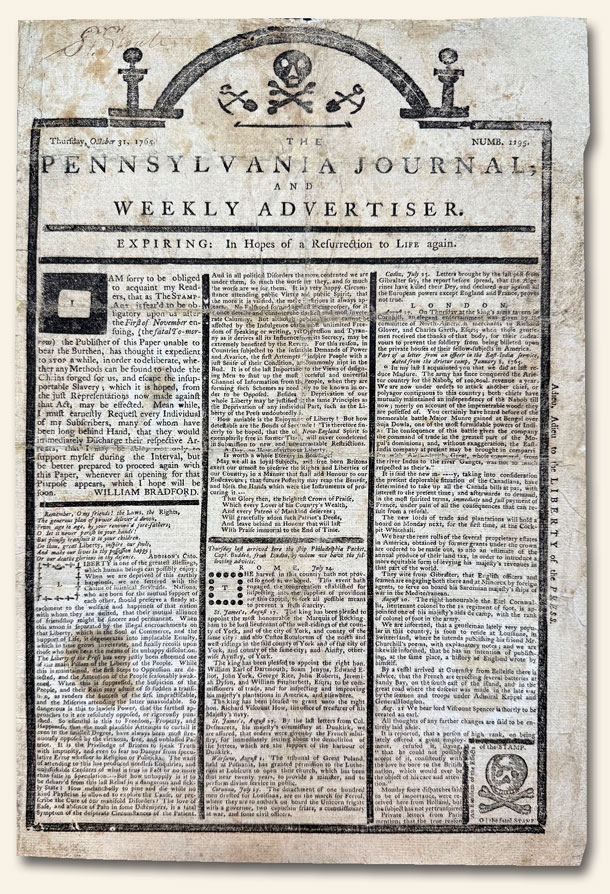Lead-up to a Nation… as reported in the newspapers of the day (November, 1775)…
December 5, 2025 by GuyHeilenman · Leave a Comment

Continental Currency – No Power to Tax or Regulate (Lead-up to a Nation – E14)
League of Friendship-Articles of Confederation Underscored National Power (Lead-up to a Nation-E15)
James Rivington – From Impartial to Loyalist (Lead-up to a Nation – E16)
The Liberty Bell – Proclaim Liberty Through the Land (Lead-up to a Nation – E17)
We hope you are enjoying this year-long trek to the 250th anniversary of The United States through the eyes of those who were fully engaged, first hand. As mentioned previously, all accounts are rooted in what they read in the newspapers of the day.
“History is never more fascinating than when read from the day it was first reported.” (Timothy Hughes, 1975)
Lead-up to a Nation… as reported in the newspapers of the day (October, 1775)…
November 6, 2025 by GuyHeilenman · Leave a Comment

England Misses the Temper of the Times (Lead-up to a Nation – E9)
George Washington – Religious Freedom (Lead-up to a Nation – E10)
Ethan Allen and his Green Mountain Boys (Lead-up to a Nation – E11)
The Liberty Tree (Lead-up to a Nation – E12)
George Washington – Integrity, Leadership & Humility (Lead-up to a Nation – E13)
We hope you are enjoying this year-long trek to the 250th anniversary of The United States through the eyes of those who were fully engaged, first hand. As mentioned previously, all accounts are rooted in what they read in the newspapers of the day.
“History is never more fascinating than when read from the day it was first reported.” (Timothy Hughes, 1975)
Lead-up to a Nation… as reported in the newspapers of the day (Intro & Sept., 1775)…
October 3, 2025 by GuyHeilenman · Leave a Comment

British News Delayed – Lead-up to a Nation (E5)
Lord Dunmore and Colonial Unrest – Lead-up to a Nation (E6)
Patrick Henry – Lead-up to a Nation (E7)
Benjamin Franklin – Lead-up to a Nation (E8)
We hope you are enjoying this year-long trek to the 250th anniversary of The United States through the eyes of those who were fully engaged, first hand. As mentioned previously, all accounts are rooted in what they read in the newspapers of the day.
“History is never more fascinating than when read from the day it was first reported.” (Timothy Hughes, 1975)
Lead-up to a Nation… as reported in the newspapers of the day (Intro & August, 1775)…
September 5, 2025 by GuyHeilenman · Leave a Comment

Shown below are the first four installments.
The Necessity of Taking Up Arms – Lead-up to a Nation (E1)
The Olive Branch Petition – Lead-up to a Nation (E2)
The Speech of Edmund Burke – Lead-up to a Nation (E3)
England Declares War – Lead-up to a Nation (E4)
We hope you enjoy this year-long trek to the 250th anniversary of The United States through the eyes of those who were fully engaged, first hand. All accounts will be through what they read in the newspapers of the day. After all, as Tim Hughes proclaimed back in 1975: “History is never more fascinating than when read from the day it was first reported.”
A 49 year search comes to an end… The 1765 “Tombstone” issue…
September 1, 2025 by TimHughes · Leave a Comment
There are a number of iconic American newspapers that every collector desires, most are for content alone such as the Declaration of Independence, the Constitution, the assassination of Abraham Lincoln, etc.
 Not many are desired for both historical significance as well as graphic appeal, but such is the case with the Pennsylvania Journal of October 31, 1765. Having been aware of it for many years (photos are found in many high school history books), I had always been in the search for a genuine issue (beware: many reprints exist). I came close about 35 years ago when an institution, which had two in their collection, gave thought to exchanging one with me for an unknown Philadelphia newspaper I had discovered. Ultimately, they opted not to do the swap, so the search was back on.
Not many are desired for both historical significance as well as graphic appeal, but such is the case with the Pennsylvania Journal of October 31, 1765. Having been aware of it for many years (photos are found in many high school history books), I had always been in the search for a genuine issue (beware: many reprints exist). I came close about 35 years ago when an institution, which had two in their collection, gave thought to exchanging one with me for an unknown Philadelphia newspaper I had discovered. Ultimately, they opted not to do the swap, so the search was back on.
It ended earlier this year.
This particular edition, famously known as the “tombstone edition,” used striking visual and textual elements to express colonial outrage over the Stamp Act tax, which required many printed materials, including newspapers, to bear a revenue stamp. This tax directly impacted printers and publishers, placing a heavy economic burden on them and fueling widespread resistance.
As seen in the photos, the masthead featured a skull and crossbones, a powerful symbol representing the “death” of the press under the weight of the Stamp Act. Also, an engraving of a coffin appears at the bottom of the back page, captioned: “The last Remains of the PENNSYLVANIA JOURNAL Which departed this Life, the 31st of October, 1765, Of a Stamp in her Vitals, Aged 23 Years.”
Publisher William Bradford begins the issue with poignant commentary, including: “I am sorry to be obliged to acquaint my readers, that as The Stamp Act is fear’d to be obligatory upon us after the First of November ensuing (the fatal to-morrow) the publisher of this paper unable to bear the burthen, has thought it expedient to stop a while, in order to deliberate whether any methods can be found to elude the chains forged for us…”.
Published just one day before the Stamp Act’s enforcement, this edition cleverly voiced dissent without yet violating the law, making it a strategic act of defiance.
This “tombstone edition” of the Pennsylvania Journal captured this economic strain and transformed it into a public rallying cry.
This edition stands as a vivid example of how the colonial press used creativity to oppose British policies, contributing to the growing revolutionary sentiment. It underscores the critical role newspapers played in shaping public opinion and mobilizing opposition in the years leading up to the American Revolution.
While other newspapers also protested the Stamp Act, the Pennsylvania Journal’s dramatic tombstone imagery made it particularly memorable and influential. It galvanized public resistance, cementing its place as a powerful symbol of defiance in American history.
John Hancock appointed… The Traveler…
June 4, 2018 by The Traveler · Leave a Comment
 I traveled today to Boston, Massachusetts, by the way of the The Boston Chronicle dated June 6, 1768 where I found an announcement had been made “His Excellency the Governor have appointed John Hancock, Esq; to be first Major of the independent company of Cadets, and William Coffin, jun. Esq; to be second Major of the said company.”
I traveled today to Boston, Massachusetts, by the way of the The Boston Chronicle dated June 6, 1768 where I found an announcement had been made “His Excellency the Governor have appointed John Hancock, Esq; to be first Major of the independent company of Cadets, and William Coffin, jun. Esq; to be second Major of the said company.”
~The Traveler
The Traveler… sail away… and away again…
September 7, 2017 by The Traveler · Leave a Comment
 This week’s journey took me to London, England, by the means of The London Gazette dated September 5, 1667. This carried the report from Plymouth the that “The Virginia Fleet sailed from hence, and from Foy, on Friday, last are by contrary Winds put back again into this Port, and expect only a fair Gale to encourage them to pursue their Voyage.” What a great reminder as to the difficulties of early trans-Atlantic travel – that which we now take for granted.
This week’s journey took me to London, England, by the means of The London Gazette dated September 5, 1667. This carried the report from Plymouth the that “The Virginia Fleet sailed from hence, and from Foy, on Friday, last are by contrary Winds put back again into this Port, and expect only a fair Gale to encourage them to pursue their Voyage.” What a great reminder as to the difficulties of early trans-Atlantic travel – that which we now take for granted.
~The Traveler
A February, 2017 stroll back thru time – 50, 100, 150, 200, & 250 years ago…
February 6, 2017 by GuyHeilenman · Leave a Comment
 What news was reported in the month of February – 50, 100, 150, 200, and 250 years ago (1967, 1917, 1867, 1817, 1767)? Such a walk back through time via the eyes of those who read the daily and weekly newspapers of the period can be quite revealing. This is why we often say, “History is never more fascinating than when it’s read from the day it was first reported.” The following links will take you back in time to show the available newspapers from the Rare & Early newspapers website. There’s no need to buy a thing. Simply enjoy the stroll.
What news was reported in the month of February – 50, 100, 150, 200, and 250 years ago (1967, 1917, 1867, 1817, 1767)? Such a walk back through time via the eyes of those who read the daily and weekly newspapers of the period can be quite revealing. This is why we often say, “History is never more fascinating than when it’s read from the day it was first reported.” The following links will take you back in time to show the available newspapers from the Rare & Early newspapers website. There’s no need to buy a thing. Simply enjoy the stroll.
Introducing: RareNewspapers.com – The 1600’s and 1700’s…
September 15, 2016 by GuyHeilenman · Leave a Comment
Collectible 1600s & 1700s Newspapers
 “History is never more fascinating than when it’s read from the day it was first reported.”
“History is never more fascinating than when it’s read from the day it was first reported.”
It might not be your first thought, but newspapers from the 1600s and 1700s are very similar content-wise to modern newspapers. Early newspapers contained reports on wars, natural disasters, listed items for sale, and published death notices. Sound familiar? Newspaper content hasn’t changed drastically in 300-plus years. It is interesting to read accounts from this era and realize how similar we modern folk are to our ancestors. It seems that people at their core are mostly the same, and to this day, want to read news covering similar topics. That being said, some aspects of newspapers definitely have changed.
What has changed are the dimensions (smaller then, larger now), the number of pages (fewer then), paper quality (higher quality rag linen then), and the format. Newspapers of this period typically had an inflexible format, meaning that if page three was dedicated to foreign news, even if the most amazing foreign event occurred, it would appear on page three, not page one—period.
Due to the time it would take to typeset and print an issue, breaking news of major events would often be printed on a separate sheet called an “Extra” or an “Extraordinary” that was delivered with the daily issue or sometimes was not distributed until the following day.
Much more can be said regarding newspapers from the 1600’s and 1700’s, but for now, please enjoy the Rare Newspapers dedicated page dedicated to original and historic issues from this era:
The 1600’s and 1700’s
The Traveler… give it up for the second time, with a little help…
December 21, 2015 by The Traveler · Leave a Comment
 Today I traveled to Edinburgh by the way of The Edinburgh Advertiser dated December 20, 1765. There I found an account of a New Hamsphire stamp agent by the name of George Meserve being forced to resign for the second time. “…that Mr. Messerve, notwithstanding his late verbal resignation, determined to execute his office…about 400 resolute men, well equipped…Their purpose was to demand of Mr. Messerve a more explicit resignation…the repeated assurances from the Council, that the bale of stamped paper should not be opened…that they would never use them on any account, disarmed the populace of all their resentment…The stamped papers sent for the use of this province are lodged in the fort at Newcastle where they are to remain as a dead inactive lump of matter…”
Today I traveled to Edinburgh by the way of The Edinburgh Advertiser dated December 20, 1765. There I found an account of a New Hamsphire stamp agent by the name of George Meserve being forced to resign for the second time. “…that Mr. Messerve, notwithstanding his late verbal resignation, determined to execute his office…about 400 resolute men, well equipped…Their purpose was to demand of Mr. Messerve a more explicit resignation…the repeated assurances from the Council, that the bale of stamped paper should not be opened…that they would never use them on any account, disarmed the populace of all their resentment…The stamped papers sent for the use of this province are lodged in the fort at Newcastle where they are to remain as a dead inactive lump of matter…”
~The Traveler




